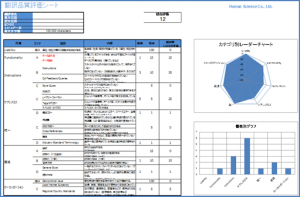[Case Study] Creation and Translation of Manuals for Measuring Instruments and Measurement Devices
- "The manuals are difficult to understand, perhaps because they are written by engineers."
- "Quality is unstable depending on the translator's skills"
- The quality of the use of technical terms is not good.
Do you have any concerns such as these?
We will introduce Human Science solutions based on manual creation and translation projects for domestic sensor, measuring instrument, control, and measurement equipment manufacturers.
Customer Requests and Challenges
We received an inquiry from a customer via the website regarding manual creation and translation.
1. We want to launch the product in all languages simultaneously (speed)
2. Concern about the quality of translation in specialized fields (accuracy)
3. The translator changes with each request, making it difficult to maintain quality. Terminology and expressions are inconsistent.
4. The Japanese manual is difficult to understand. Mistranslations also occur.
After hearing about the above issues through phone calls and meetings, we will provide estimates and proposals for the work content.
・Image sensors, image processing equipment
Digital Microscope
- Laser Microscope
・Three-Dimensional Measuring Devices
We have been continuously assisting with the creation of Japanese manuals and translations into English, German, Chinese, and Korean since 2009.
1. We want to launch the product in all languages simultaneously (Speed)
For a certain project, we delivered the revised Japanese version of a 450-page manual and completed translations into English, Chinese, Korean, and German in approximately 3.5 months.
To shorten the creation period, translation will begin from the middle of the Japanese version creation.
As changes occur in the product development specifications, smoothly reflect those changes in other languages.
"Difference Management Sheet", "Translation Check Sheet", "DTP Check Sheet", and the thorough implementation of the "Operational Management Sheet" ensure that the number of unreflected differences is "0".
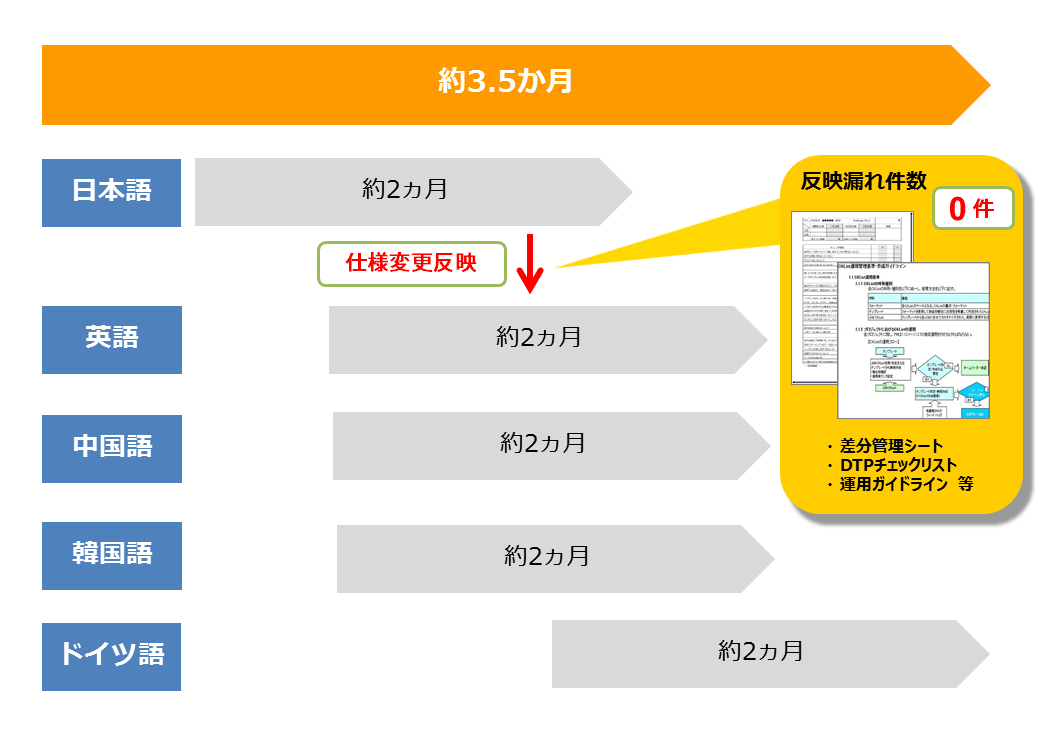
There are 15 in-house technical writers at Human Science. There are over 30 translators for each language (supporting 40 languages).
We will assign the most suitable writers and translators from our abundant resources.
Project Structure
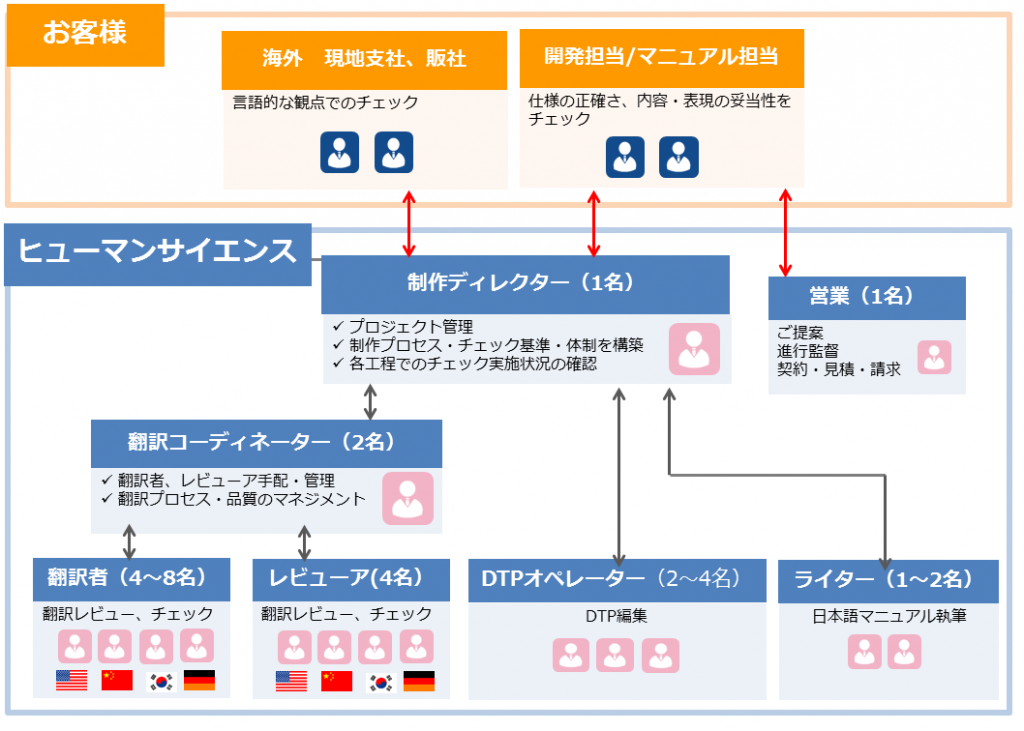
In the creation of the Japanese version, five writers wrote 800 pages in about two months.
We will take custody of the prototype of the product under development, store it in a security room, and the writer will write while checking the prototype and the specifications.
When specifications change, we also perform firmware updates, so you won't have to worry about any inconvenience during specification changes.
>> About the Security Room (Confidential Information Management)
Only project stakeholders are allowed to enter and work in the security room.
Access is managed with a PIN set by authorized personnel to prevent entry by unauthorized individuals.

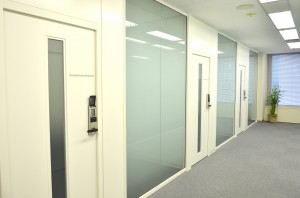
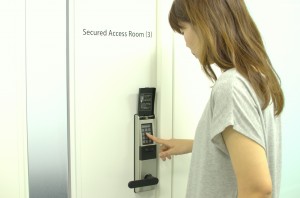
2. Concern about the quality of translation in specialized fields (accuracy)
One of the concerns our customers have when ordering the translation of user manuals is "accuracy".
Not just translating Japanese to English, but assigning translators with experience as in-house translators at measurement instrument manufacturers, who are familiar with industry-specific terminology and expressions.
In this project, the translation was handled by someone with 9 years of experience as a translator and 5 years of experience working at a measuring instrument manufacturer (design and translation).

-
Translator's Profile
Translation Experience: 9 years
Measurement and Control System Manual
・Promotional Materials for Measuring Instruments/Test Measurement Instruments
Technical Documentation
・Patent Materials
Worked at a measuring instrument manufacturer: 5 years
Measurement Instrument Design
・Sales Promotion for Measurement Control Equipment / Analyzers
At Human Science, we conduct the selection and trial examination of translators by "measurement equipment," "FA equipment," "system development," "medical," and other "fields" when registering translators.
Only translators who have been contracted, taking into account reviews by natives and their track record, will be assigned to the project.
We have established strict standards, and the pass rate is 20%.

After the project is completed, feedback from the client and internal reviewers will be provided to the translator.
We register evaluations of quality and responsiveness in the translator database for projects, which will be utilized in the next translation project.
3. The translator changes with each request, making it difficult to maintain quality. Terminology and expressions are inconsistent.
When translating a large number of manuals in a short period, it is necessary to divide the work among multiple translators.
While the speed of work increases, inconsistencies in terminology and expressions are likely to occur.
We have organized a glossary and style guide, implemented "visualization of standards", and achieved stabilization of quality.
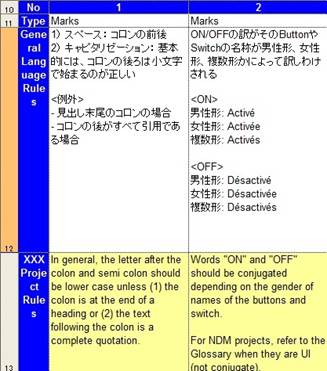
French Style Guide
Benefits of Maintaining a Glossary and Style Guide
Translation Cost Reduction
Inconsistent terminology and expressions can lead to a decrease in repetition rates when using translation memory tools such as Trados, resulting in higher costs.
By establishing rules for consistent terminology and expressions, lower translation costs can be expected.
Decrease the Number of Inquiries to the Help Desk and Support Center
By avoiding user confusion caused by different expressions with the same meaning, it also leads to a reduction in the operational costs of the help desk.
Continuous operation of translation memory, glossary, and style guide
For customers who do not have a glossary or style guide, we propose the following process to develop a glossary and style guide.
- Before Translation Work
-
- 1. Review of the document to be translated
- 2. Identification of Terms and Styles to be Unified
- Translating
-
- 1. Distribute the target documents and glossaries/style guides to translators and reviewers.
- 2. Translation and review work based on the glossary and style guide
- After Delivery
-
- Update of Glossary and Style Guide
Stabilization of Quality through the Use of Tools
Conducted checks using Trados and proprietary proofreading tools.
Prevents errors that cannot be caught by the human eye, further enhancing quality.
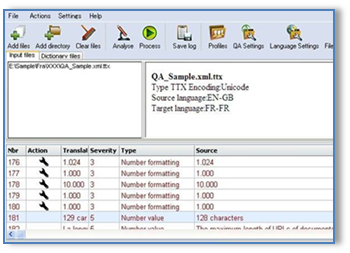
Translation Proofreading Tools
Checklist
Translation omissions, consistency of translations, garbled text, numbers, terminology, format checks, spell checks, style
checks, language rules
Example of Check Tool
Trados QA Checker, QA Distiller, Xbench, UI Checker (our proprietary tool)
Localization engineers customize the necessary check items for each project.
4. The Japanese manual is difficult to understand. Mistranslations also occur.
The instruction manual was created by the engineers in charge of development.
Creating an easy-to-understand manual requires different document creation skills than those used for creating specifications.
Translating ambiguous sentences as they are can lead to incorrect meanings, resulting in mistranslations and potentially degrading quality.
Technical writers analyzed both Japanese and English manuals. We proposed improvements that led to an enhancement in the quality of the manuals.
Benefits of Improving the Source Manual
Avoid Mistranslations and Low Quality
When operation methods are described incorrectly, this can lead to loss of trust and potential accidents.
Improving the quality of Japanese manuals, as well as English and multilingual manuals, raises customer satisfaction.
Decrease the Number of Inquiries to the Help Desk and Support Center
By providing users with accurate and easy-to-understand manuals, it also helps reduce the operational costs of the help desk.
Translation Cost Reduction
Inconsistent terminology and expressions can lead to a decrease in repetition rates when using translation memory tools such as Trados, resulting in higher costs.
By establishing rules for consistent terminology and expressions, lower translation costs can be expected.
Writers familiar with manufacturing-related products are in charge of writing
We have formed a production team consisting of experienced writers in creating operation manuals for precision equipment.
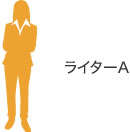
Technical writer (28 years)
Production Achievements
Hardware manuals for precision equipment, software operation manuals, help
CAD/CAM related training manuals
Network configuration manuals for equipment
Operation manuals and user manuals for equipment management systems
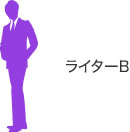
16 years of experience as a translation coordinator
Production experience (example)
Control Application Operation Manual for Measurement Instruments
* Manuscript created based on specifications, actual devices, and interview results
Laser Microscope User Manual
Medical Device Operation Manual<br/>Mobile Phone and Smartphone Operation Manual
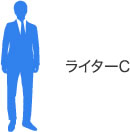
Technical writer (33 years)
Production Achievements
Measuring instruments/analyzers, mobile devices, office automation equipment, AV equipment, PC-related devices/peripherals
PC software (general applications), in-house systems (dedicated applications)
*Experience in manufacturing at domestic manufacturers and involvement in production management operations


